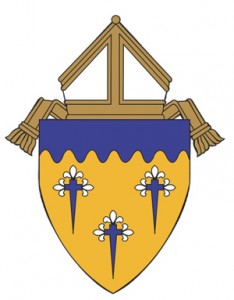Dcn. John Grek
Director of Diaconal Life
Beginning on May 28, deacons in the Diocese of Superior will be allowed to wear the Roman collar shirt when they are involved in performing their ministry. From the beginning of the reestablishment of the permanent diaconate in the early 1970s, bishops in some dioceses have granted deacons to wear clerical attire; specifically, the same shirt and collar a priest wears. Frequently, a different color shirt is specified to distinguish the deacon from a priest or sometimes the embroidered deacon’s cross or pin on the left chest.
From the inception of the permanent diaconate in the Diocese of Superior in the mid-1980s, deacons were not allowed to wear clerical attire. Over the years, the role of the deacon has evolved and taken on more prominent and more public roles. There has been discussion from time to time as to whether or not deacons should be allowed to wear clerical attire.
At the Presbyteral Council meeting in February, the members agreed to grant that right. So in consultation with Bishop James P. Powers, we have decided to allow deacons in the Diocese of Superior to begin wearing the Roman collar while in the performance of their ministry. As of May 28, the Feast of Pentecost, deacons will have the option to wear a gray shirt with a Roman collar if they so desire, to help distinguish them from their brother priests. An embroidered deacon’s cross or a deacon’s cross pin can be worn on the left chest. Black clerical shirts for deacons will not be allowed.
The deacon’s daily attire will remain to be appropriate for his field of secular work. While The Code of Canon Law (Canon 284) does not oblige permanent deacons to wear clerical attire, each diocesan bishop can determine and promulgate any exceptions to this law, as well as specify the appropriate clerical attire if it is to be worn. Deacons in the Diocese of Superior will have the option to wear a gray clerical shirt with Roman collar when the deacon is exercising his ministry. This includes, but is not limited to: visits to hospitals, prisons/jails, bringing holy communion to the sick and visits to nursing homes; visible participation in ecumenical services; meetings with individuals, couples or classes for religious instruction, sacramental preparation or other spiritual purposes and liturgies in which the deacon is leading the faithful in prayer. When serving in a specific liturgical ministry, deacons are to wear the vesture that is prescribed in the rubrics.
Wear of the collar is not required of deacons by our bishop. So when you see your parish deacon after May 28, he may or may not look different. Regardless, don’t be afraid to approach and talk to us. That is what we are here for!

